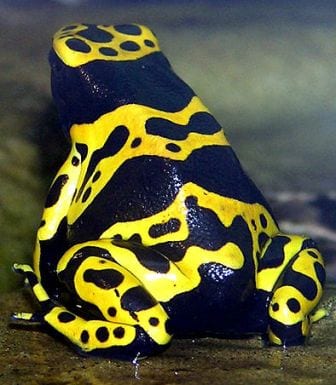Specimen of the Week: Week 112
By Emma-Louise Nicholls, on 2 December 2013
 In a life changing move of progressionism, I have decided to do something a little different this week. I know, I know, “Noooo Emma, don’t do it, continuity is key!” I hear you cry. But do not fear my loyal follower (Mum) and other people who have come across this blog by accident, I promise you this is going to. rock. your. world. Rather than look at a single species, we are going to go on a journey of poisonings, lies, and masters of subterfuge. This week’s Specimen of the Week is…
In a life changing move of progressionism, I have decided to do something a little different this week. I know, I know, “Noooo Emma, don’t do it, continuity is key!” I hear you cry. But do not fear my loyal follower (Mum) and other people who have come across this blog by accident, I promise you this is going to. rock. your. world. Rather than look at a single species, we are going to go on a journey of poisonings, lies, and masters of subterfuge. This week’s Specimen of the Week is…
**The entire box of butterflies**
1) In this box are eight specimens of butterfly collected from the rainforests of the Americas. Some are from Honduras in Central America, whilst others with, presumably, a slightly different accent, hail from Surinam and Columbia in South America. These eight specimens of butterfly pertain to two completely* unrelated genera. Why are they in the same box you may ask. Storage issues? Poor taxonomic skills? No, the reason for their partnership is a a story of intrigue and murder (in the loosest sense of the word). Now I’ve whetted your appetite, read on dear armchair explorer…
2) Heliconius
The four specimens on the right of the image above belong to the genus Heliconius. The larvae of these beautiful and delicate little creatures do something rather… hardcore. The caterpillars feed on passion flowers called passifloras that are poisonous to lots of species- both invertebrate and vertebrate. Unphased by this toxic diet, the caterpillars redeposit the poison within their own body tissue. The result is that the organism that hatches out of the chrysalis is a beautiful but deadly butterfly that is toxic to its bird, reptile and amphibian predators. Good work.

A non-butterfly-but-too-beautiful-to-not-include
poison dart frog. The vibrant skin patterns warn predators
of its toxicity, just like our butterflies. (Image by Adrian
Pingstone, obtained from commons.wikimedia.org)
3) Melinaea
What of the specimens on the left? Their larvae are nowhere near as bold and daring as the Heliconian caterpillars. Rather than digest poison, they chose a path in life more akin to an internet scammer, hiding behind an impersonal interface to cause chaos and strife. You will have noticed the aesthetic similarity between the two groups in the image above I’m sure. The brightly coloured wing patterns of the toxic Heliconia with poison munching larvae is a warning to predators that eating them would be a bad move, as with this poison dart frog. Whilst the Melinaea (on the left) are a non-poisonous genus, they have evolved to look remarkably similar to the corresponding, poisonous, butterflies to their right. Although unrelated, the Melinaea on the left have learnt that they can use subterfuge to evade predators, in the guise of mimicking a toxic species. Respect.
4) So how related are they? Well, they’re both butterflies, or Lepidoptera, which is a good starting point in elucidating a familial relationship. Both genera fall within the family Nymphalidae, which comprises the amusingly named ‘brush-footed butterflies’. However that’s where the offspring of their great-great-great-great-…great-…great grandparents decided to marry outside of the village and so divergence began to take place. Heliconius belongs to the subfamily Heliconiinae and Melinaea belongs to the subfamily Danainae.

The beautiful ye olde box containing the eight
Nymphalid butterflies at the Grant Museum of
Zoology (LDUCZ-L60)
5) These butterflies were dried and pinned to the baseboard of this ye olde looking glass fronted, wooden display box, way back ‘in the day’, as it were. Although the precise date of either collection or acquisition into the museum are not known, the genus written on the original specimen labels went out of date in 1780. It is probable therefore, that the specimen box dates to within a few decades of that time, possibly the early 1800’s when the original specimens were being collected by and on behalf of Robert Grant, after whom the museum is named. His personal collection of 10,000 specimens formed the foundation for the 68,000 specimen strong museum of today.
*A relative term
Emma-Louise Nicholls is the Curatorial Assistant at the Grant Museum of Zoology
2 Responses to “Specimen of the Week: Week 112”
- 1
 Close
Close


*cough*
http://blogs.ucl.ac.uk/museums/2012/06/25/specimen-of-the-week-week-thirty-six/#more-11271
Although it is nice to read some more information about them.
;o)